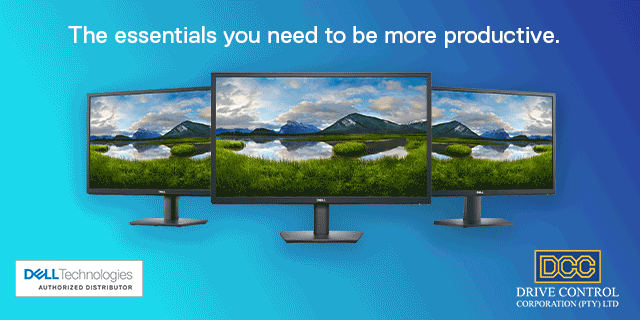The importance of high-density in datacentre infrastructure
By Industry Contributor 20 April 2022 | Categories: news
NEWS SPONSORED BY DELL E-SERIES 24" MONITORS FROM DCC:
The high-density datacentre packs far more punch for the modern business, and within improved sustainability and cost targets, says Conrad Kock- Principal Practice Head: Intelligent Infrastructure at Dimension Data.
The rapid digital transformation move to cloud services and architecture has played no small role in pushing the business towards more flexible and scalable datacentre investments. Most companies have come to rely on the flexibility that cloud computing offers to stay ahead in uncertain times. However, with different levels of maturity and footprint, they all face different levels of complexity when it comes to establishing their datacentre foundations. Managing a datacentre is an expensive endeavour - one that requires consistent power, maintenance, security, cooling, infrastructure and staff.
Colocation offers organisations an opportunity to minimise the costs by removing reliance on legacy on-premises investments and replacing it with agility and greater control.
The unknown value of high-density
Enter high-density.
The high-density datacentre is defined by its power-to-space ratio and its ability to put more power into the same space, delivering on the ever-increasing demands that businesses are requiring from their datacentre solutions. Tightly packed power within tighter constraints delivering to the customer mandate while reducing costs, improving efficiencies and allowing for better access to unique services, such as the interconnected marketplace, colocation and faster time to market.
This, the next evolution in the increasingly ubiquitous datacentre ecosystem, allows for service providers to streamline costs and efficiencies by reducing clusters of servers that aren’t being used while increasing capacity. The availability of more kilowatts per rack enables, to some extent, futureproofing your location in the chosen datacentre, but also allows for designs where clients can minimise all the ancillary costs in top of rack switching, additional set up costs, additional racks, PDU’s etc.
With ever-increasing data expectations and not enough agility to scale-up on demand, often companies find that datacentre costs increase and add unexpected weight to the bottom line. The high-density datacentre is designed to mitigate the risk of rising costs by architecting volume against kilowatts – more cabinets within a tighter space delivering to higher data demands.
The current market demands seem to be around 5kW per rack today, for the enterprise and up to 10kW per rack for the managed services providers and other private cloud industries. With these being the requirements today, it's important for us to architect the datacentre with some head room for customers to grow over time, which is why the modern datacentre provider designs for 20kW and more per rack.
Considering that many companies that host clients are running racks that were designed to manage 1.5kW per rack, and have implemented a limit of no more than 3kW per client directly, it's clear why high-density is gaining traction, and why this is important in the design and development of datacentre infrastructure.
Folding in the business requirements
The move forward into high-density means moving away from the complexities of adding racks to the bill – and costs of the switches, cabling and connections that go with it – towards a simpler approach that refines spend and efficiency.
The economics of high-density are measurable, and investment into a datacentre that’s simple, fast, capable and futureproof also provides the business the agility it needs to improve service delivery and speed to market.
Most Read Articles

Have Your Say
What new tech or developments are you most anticipating this year?




